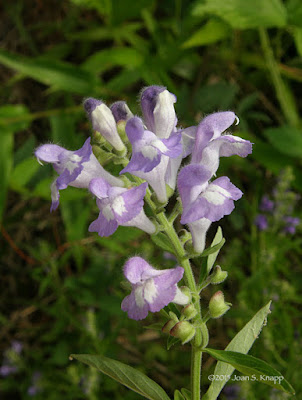May 18th. I started to walk again at Fort Yargo State Park
in Winder, Georgia. One of my favorite walks is from the Group Shelter A to the Old Fort and back. This
is a rewarding walk for viewing wildflowers and I’ve been trying to walk it
weekly and document the wildflowers I see.
A few Flowering Spurge (Euphorbia corollata) plants were
blooming. The main flowering season for this species is in late Summer-early
Fall but they do flower in the Spring. This flower was fertilized and the seed
capsule forms on a ‘stalk’ from the flower center. Gives new meaning to the term, superior ovary.
The Strawberry Bush (Euonymus americanus) had finished
blooming and seed capsules were already forming from fertilized; they were
about one-quarter inches in diameter.
The Blackgum (Nyssa sylvatica) was blooming. It would be
easy to overlook these flowers.
I headed over to the…
Redring Milkweed (Asclepias variegata) plants. These were
blooming.
The common name, Redring Milkweed, is attributable to the red rings at the base of the centers of the flowers.
I had been keeping my eye on an area near a bench in the
open. It is a short detour from the trail. A patch of…
Helmet Flower (Scutellaria integrifolia) plants were
blooming. It would be easy to walk along
the trail without seeing these if you didn’t know where to look for them.
Approaching the first bridge…
I checked the Solomon’s Seal (Polygonatum biflorum) plants
near the path to the disc golf course.
Berries were developing on these; the flower petals were
caught on the berries.
As I was crossing the bridge, I got a really pleasant
surprise.
A Gray Petaltail (Tachopteryx thoreyi) dragonfly flew past me and landed on the bridge rail. I was fortunate enough to get a shot before it flew away. This is the second close encounter with a Gray Petaltail. A few years ago, one landed on my shorts in the Scull Shoals Experimental Forest in Greene County, Georgia. I read somewhere that these dragonflies are hard to spot. Usually, they land on tree trunks where they blend into their background. So I have been particularly fortunate in sightings of this dragonfly.
Tulip Poplar (Liriodendron tulipifera) flowers were still
falling from the trees during storms.
Pipsissewa (Chimaphila maculata) flower buds were still
developing nicely, and..
berries were still developing on Deerberry (Vaccinium staminium)
bushes just beyond the first bridge.
The large seedpod was still developing on the Eastern
Sweetshrub (Calycanthus floridus) bush. It had gained enough weight that the
developing seedpod was hanging downward rather than almost horizontally; a good
sign that it is developing and may mature.
The Rattlesnakeweeds (Hieracium venosum) had finished
blooming. Seedheads were abundant and the seeds were dispersing in the windy
weather.
I was anxious to see how the seed capsules of the witch
hazel were developing.
The capsules were developing nicely. I counted 19 or 20
capsules on this plant, many fewer than the number of flowers that had bloomed
last Fall.
Some of the flowers on the Mountain Azaleas (Rhododendron
canescens) at the top of the cliff had been fertilized and were starting to
swell.
I was happy to find that the second remaining Eastern
Sweetshrub bush, at the top of the cliff, had swelled noticeably. It had
remained the same size for so long that I was afraid that it would not mature.
I’m hopeful now.
I made my way along to the bridge to the Fishing Area and
was pleasantly surprised by a…
small Yellow-bellied Slider (Trachemys scripta scripta) that was basking in the sun on a
floating log beside the bridge.
And then into the Fishing Area…
(To be continued…)
Related posts:
























No comments:
Post a Comment